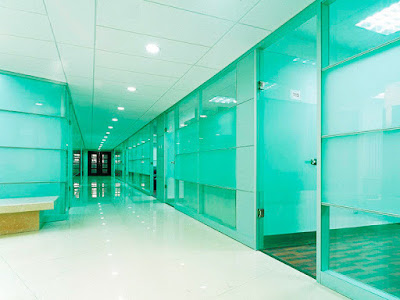Triplex
(from the Latin. «triplex» - «triple»),
the so-called safety glass - multi-layered glass. Usually, these are two or
more glasses, glued together by a special polymer film or photo-curable
chemical composition capable of holding fragments of glass in the event of a
strong impact. Such a laminated glass is made, as a rule, by pressing during
heating.
 |
| Triplex |
Triplex
was invented in France, in 1909, by a French artist, composer, writer, and
chemical scientist Edouard Benedictus. The circumstances of the invention of
triplex are as follows. In 1903, inadvertently dropping a tube filled with the
remnants of a solution of nitrocellulose, Edward Benedictus noticed that the
glass was cracked, but not scattered into pieces. The solvent in the test tube
evaporated long ago, and the nitrocellulose settled on the inner surface of the
test tube in the form of a thin film. Being impressed by the newspaper reports
of injuries inflicted by crashing automotive glass, Benedictus immediately took
up the experiments. In 1909 he received a patent for protective glass.
 |
| Use of Triplex |
In
1911, Benedictus created a company that produced the first windshields
(“triplex”) for cars according to his patent in order to reduce the number of
victims of car accidents. For this purpose, a sheet of celluloid (plastic based
on cellulose nitrate), bonded between two glasses, was used. The production of
such glass was slow and laborious, which made it quite expensive.
Today, triplex is used
mainly for glazing vehicles (windshields of cars, railway rolling stock,
airplanes, ships, etc.), windows and facades of buildings, armored vehicles
(observation devices and protective glasses of sights). There are special
triplexes with enhanced noise absorbing properties, electrically heated,
colored, specular, electrochromic, etc.